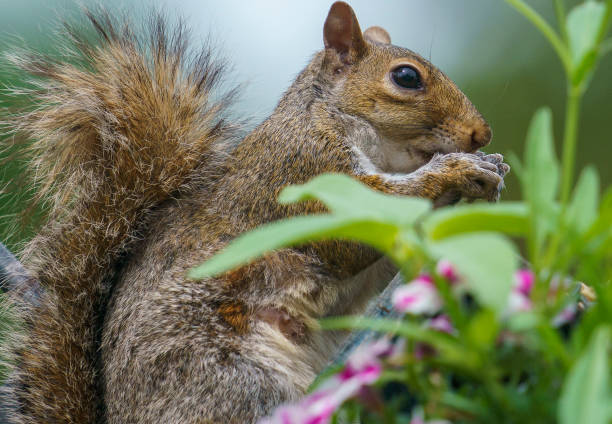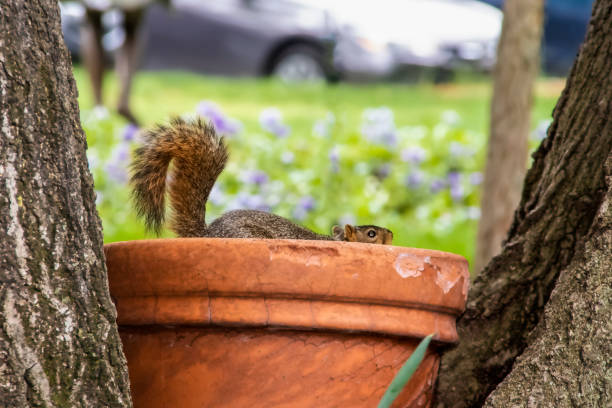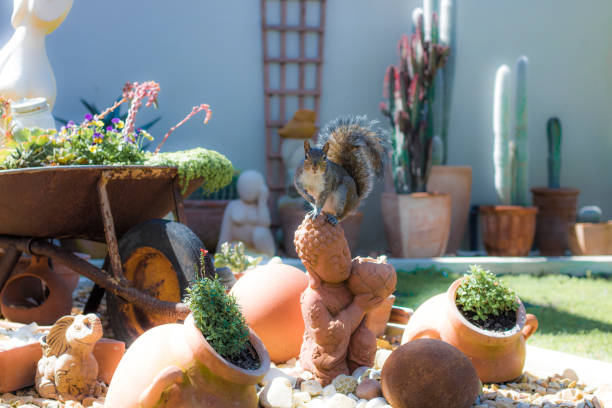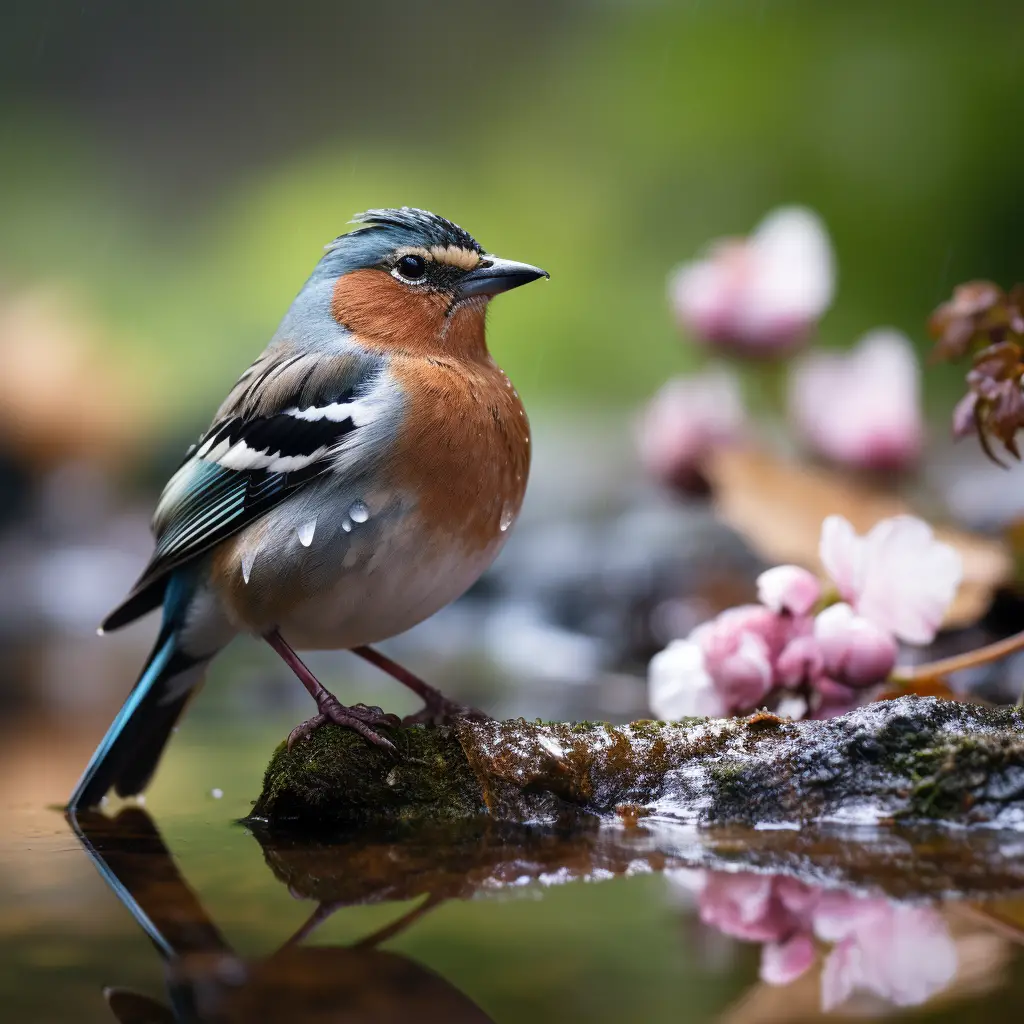
Welcome to our comprehensive guide on how to protect your beloved potted plants from the mischievous antics of squirrels. As gardening enthusiasts ourselves, we understand the frustration and disappointment that can arise when these furry creatures wreak havoc in our carefully tended gardens. Fear not, for we have compiled a list of highly effective strategies to keep squirrels at bay and safeguard your potted plants. Whether you are a seasoned gardener or just starting out, these techniques will help you maintain the integrity and beauty of your cherished greenery throughout the spring and summer seasons.
Building a Barrier: The First Line of Defense
When it comes to excluding squirrels from your potted plants, building a physical barrier is an infallible approach. Constructing a sturdy “cage” around your pots will effectively deter these persistent pests. There are several options available for creating an effective barrier:
1. Bird Netting and Chicken Wire
Bird netting and chicken wire are excellent materials for constructing protective enclosures. By wrapping your pots with bird netting or bending chicken wire into a cone or cube shape, you can prevent squirrels from accessing your plants. Ensure that the netting or wire is securely fastened to provide maximum resistance.
2. Pre-made Potted Plant Guards
For a convenient and hassle-free option, consider using pre-made potted plant guards. These guards are designed specifically to fit over the top of your pots, providing a reliable shield against squirrel invasions. Simply slip them over your plants and enjoy the peace of mind they bring.
Soil Protection: Adding an Extra Layer of Defense
Apart from physical barriers, incorporating additional layers of protection can further discourage squirrels from disturbing your potted plants. Consider these effective methods:
1. Wood Chips or Coconut Fiber
Applying a layer of wood chips or coconut fiber over the potting soil acts as a deterrent for squirrels. These materials create an additional obstacle for the persistent diggers, making it less enticing for them to invade your pots. While not foolproof, this technique, when combined with other strategies, can significantly reduce the risk of squirrel interference.
Utilizing Natural Repellents: Spice Up Your Soil

If covering the soil is not an option, using natural repellents can be a highly effective way to discourage squirrels. By introducing spices to your potting soil, you create an environment that is unappealing to these furry intruders. Here’s how you can do it:
1. Capsaicin Infused Water
Prepare a DIY squirrel repellent by boiling cayenne pepper, hot peppers with seeds, or black pepper in water. Allow the mixture to cool, strain it, and transfer it to a spray bottle. Spraying this capsaicin-infused water onto the soil will deter squirrels due to their dislike for the taste and smell of hot pepper. However, exercise caution when handling this mixture, as it can cause discomfort if it comes into contact with your skin or eyes. Wear protective goggles and gloves while applying the repellent to ensure your safety.
2. Pre-mixed Repellents
If preparing your own squirrel repellent seems cumbersome, pre-mixed repellents are readily available in the market. Follow the instructions provided by the manufacturer and apply the product with the same safety precautions as mentioned earlier. These repellents are formulated to deliver effective results while ensuring the well-being of your plants.
Distracting Squirrels: Razzle-Dazzle for Prevention

Incorporating shiny and moving objects in your garden can divert squirrels’ attention away from your potted plants. By stimulating their natural predator instinct, you can discourage them from lingering in the vicinity
of your prized greenery. Consider the following techniques to add some razzle-dazzle and keep squirrels at bay:
1. Pinwheels and Spinners
The spinning motion of pinwheels and spinners can create an illusion of movement, making squirrels cautious and hesitant to approach your potted plants. Strategically placing these colorful and eye-catching objects around your garden can help deter these curious critters.
2. Hanging Old CDs and Mirrors
Utilize old CDs or small mirrors by hanging them from strings near your potted plants. The reflective surfaces will produce glimmers of light and shadow, mimicking the presence of predators. Squirrels, being naturally wary of potential threats, will be discouraged from venturing too close to your cherished greenery.
3. Other Dazzling Objects
Get creative and experiment with other dazzling objects that catch the sunlight and create movement. Consider using reflective tape, wind chimes, or metallic wind spinners to add an element of surprise and intimidation to your garden. Remember to periodically rearrange these objects to maintain their effectiveness.
Ensuring Stability: Preventing Pot Toppling

If your main concern is squirrels knocking over your pots, implementing stability measures is crucial. By securely anchoring your pots, you can prevent these mischievous creatures from wreaking havoc. Explore the following methods to keep your potted plants upright:
1. Attaching Pots to Rails or Fences
For pots made of sturdy materials, such as plastic, attaching them to railings or fences can provide the necessary stability. Using deck screws with fender washers, secure the pots to the surface they rest on. This method ensures that even the most determined squirrels won’t be able to tip them over.
2. Utilizing Window Boxes
Consider using window boxes as an alternative to traditional pots. These containers can be mounted directly onto the window sills or affixed securely to other surfaces. Window boxes offer additional stability, making it difficult for squirrels to dislodge or topple them.
3. Nylon Nuts and Bolts for Fragile Pots
For more delicate pots that require a gentler touch, nylon nuts, and bolts are an ideal solution. By inserting these fasteners through the drainage holes and tightening them onto the surface the pot sits on, you can ensure stability without risking damage to the pot. Nylon material is waterproof and durable, making it perfect for outdoor use.
Conclusion
Gardening should be a source of joy and tranquility, and the presence of squirrels should not deter you from nurturing your potted plants. By employing a combination of effective strategies, you can successfully keep squirrels out of your garden and protect your cherished greenery.
Remember to build physical barriers, add layers of protection, utilize natural repellents, distract squirrels with shiny objects, and secure your pots to prevent toppling. With these comprehensive measures in place, you can enjoy a vibrant and squirrel-free garden throughout the spring and summer seasons.
So go ahead, implement these techniques, and reclaim your garden from the mischievous antics of squirrels. Happy gardening!
Note: While the strategies mentioned in this article have proven to be effective, it’s important to adapt them to your specific garden and environmental conditions. Additionally, always prioritize the safety of yourself, others, and the wildlife around you when implementing these measures.





